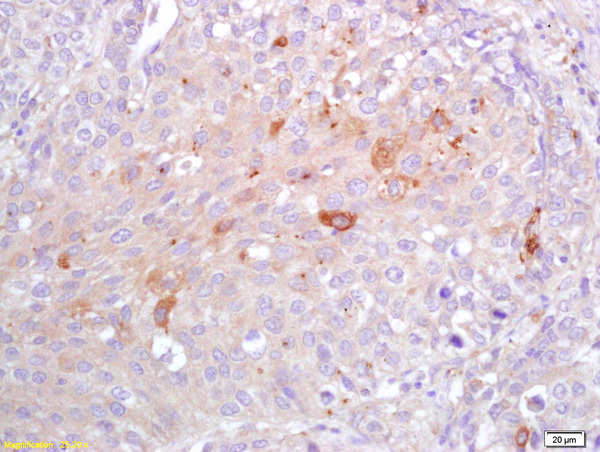anti-CRP (human), mAb (rec.) (TOB5-D4)
AG-27B-6321
ApplicationsWestern Blot, ELISA
Product group Antibodies
ReactivityHuman
TargetCRP
Overview
- SupplierAdipoGen Life Sciences
- Product Nameanti-CRP (human), mAb (rec.) (TOB5-D4)
- Delivery Days Customer10
- ApplicationsWestern Blot, ELISA
- CertificationResearch Use Only
- ClonalityMonoclonal
- Clone IDTOB5-D4
- Concentration1 mg/ml
- Estimated Purity>95%
- Gene ID1401
- Target nameCRP
- Target descriptionC-reactive protein
- Target synonymsPTX1, C-reactive protein, C-reactive protein, pentraxin-related, pentraxin 1
- HostHuman
- IsotypeIgG1
- Protein IDP02741
- Protein NameC-reactive protein
- Scientific DescriptionC-reactive protein (CRP) is a major cyclic, pentameric acute phase protein compound consisting of five identical, noncovalently bound, nonglycosylated subunits. CRP is produced by the liver, and its plasma levels rise dramatically during inflammatory processes occurring in the body. CRP is an initiator of classical complement cascade, binds to several nuclear components (chromatin, histones, etc.), plays an important role in innate immunity and mediates activities associated with pre-immune nonspecific host resistance. Specifically, there is a 100-1000 fold increase of CRP in response to injury, infection or inflammation. CRP is opsonic, an initiator of the classical complement cascade, and an activator of monocytes/macrophages. CRP also binds to several nuclear components including chromatin, histones and snRNP, suggesting that it may play a role as a scavenger during cell necrosis. CRP is involved in several host defense related functions based on its ability to recognize foreign pathogens and damaged cells of the host, and initiates pathogen elimination by interacting with humoral and cellular effector systems in the blood. Patients with elevated basal levels of CRP have been shown to be an increased risk for hypertension and cardiovascular disease. - Recombinant Antibody. Recognizes human C-reactive protein (CRP). Applications: ELISA, WB. Clone: TOB5-D4. Isotype: Human IgG1. Formulation: Liquid. In PBS. C-reactive protein (CRP) is a major cyclic, pentameric acute phase protein compound consisting of five identical, noncovalently bound, nonglycosylated subunits. CRP is produced by the liver, and its plasma levels rise dramatically during inflammatory processes occurring in the body. CRP is an initiator of classical complement cascade, binds to several nuclear components (chromatin, histones, etc.), plays an important role in innate immunity and mediates activities associated with pre-immune nonspecific host resistance. Specifically, there is a 100-1000 fold increase of CRP in response to injury, infection or inflammation. CRP is opsonic, an initiator of the classical complement cascade, and an activator of monocytes/macrophages. CRP also binds to several nuclear components including chromatin, histones and snRNP, suggesting that it may play a role as a scavenger during cell necrosis. CRP is involved in several host defense related functions based on its ability to recognize foreign pathogens and damaged cells of the host, and initiates pathogen elimination by interacting with humoral and cellular effector systems in the blood. Patients with elevated basal levels of CRP have been shown to be an increased risk for hypertension and cardiovascular disease.
- ReactivityHuman
- Storage Instruction-20°C,2°C to 8°C
- UNSPSC12352203






